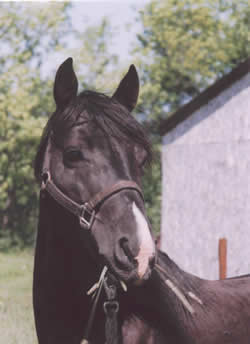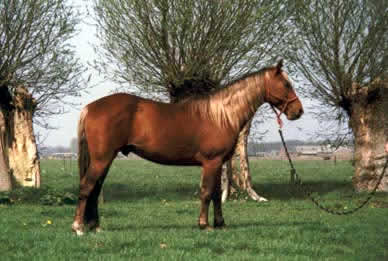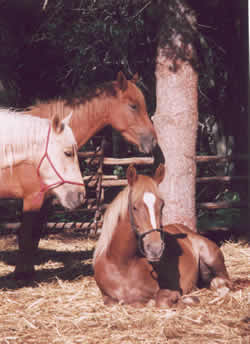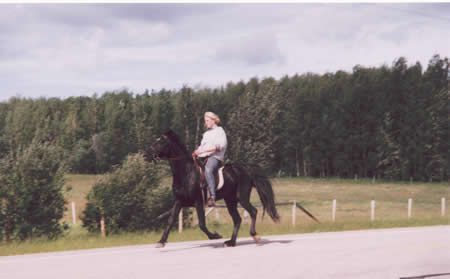|
|
|
 |
The
Singlefooter, new in Europe. |
The Singlefooter has
been around since the mid-ages. At that time these animals were called
Palfrey's. During this time these horses were owned by Nobles, Lords,
Lady's and Kings. The trotting horse at that time were labelled as Tormentors
and Cruciators, these horses were used in harness for fieldwork and ridden
by peasants. As man made roads and found the necessity to transport goods
by wagon, they started using trotting horses a lot more, one of these
reason would have been that the trotting horse were much larger horses
in that time. That's how the gaited horses slowly disappeared out of Europe.

As man started his discovery into the new worlds, the names of this horse
changed, the Palfrey meant a type of horse, not a name. There are several
different type of horses which were know to do this gait, some of these
breeds are still known for there unique way of travelling and some have
bred into the trotting lines.
A few other gaited breeds are: Spanish Barb, Morgan, Tennessee Walker,
Paso Fino, Peruvian Paso, Kentucky Whips, Missouri Fox Trotter, etc.

The Singlefooter is not a breed but a type, a mix off many different breeds.
The registry NASHA (North American Singlefooting Horse Association) is
strictly a performance-based registry regardless of the parentage. This
would allow breeders of Singlefooters to have access to other gaited stock,
to receive registration papers on animals which performed this natural
gait without use of mechanical aids and shoeing techniques, that we as
breeders as a group are working together as a group to widen the gene
pool, by breeding to none related stock of many different breeds.
 |
The way of walking
is different, the horses go in a 4 way beat; left hind, left front,
right hind, right front. Then there is a moment that the horse is
with 1 foot on the ground; the single-foot. By this way of moving
the hobbling and bumping disappears. Then it's very easy to get the
horse into this gait, and he will stay in it, because it's much easier
and relaxing for him, with for example the Icelandic, it's hard working
to keep him into the tolt.
|

The Singlefooter can go for hours in this gait (some condition required
of course). He can reach speed going over 40 kilometres an hour and keep
this for longer time. That makes them good for endurance, but also pleasure/recreation.
article
and photos by Singlefooters Nederland
Singlefooters Nederland:
* import and sales registered Singlefooters
* Standing stud: Equinox Midnight Tango
* ridings lessons by proffesional teatchers
* information and video's available.
* more info. at our website www.singlefooter.nl
|
 |
|

